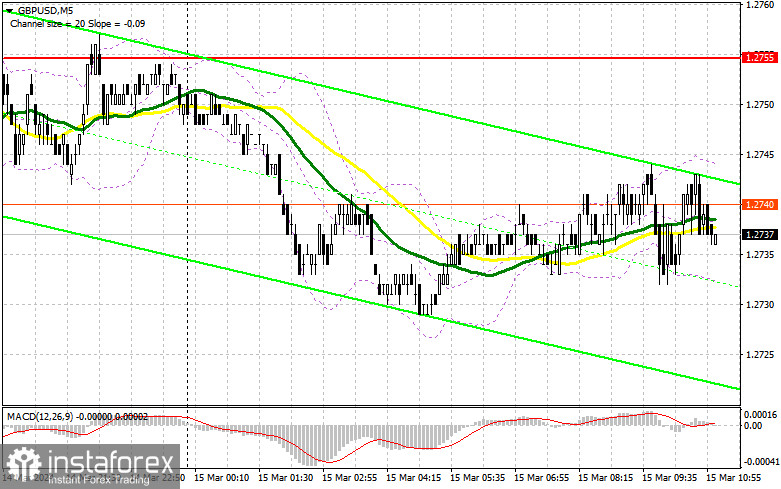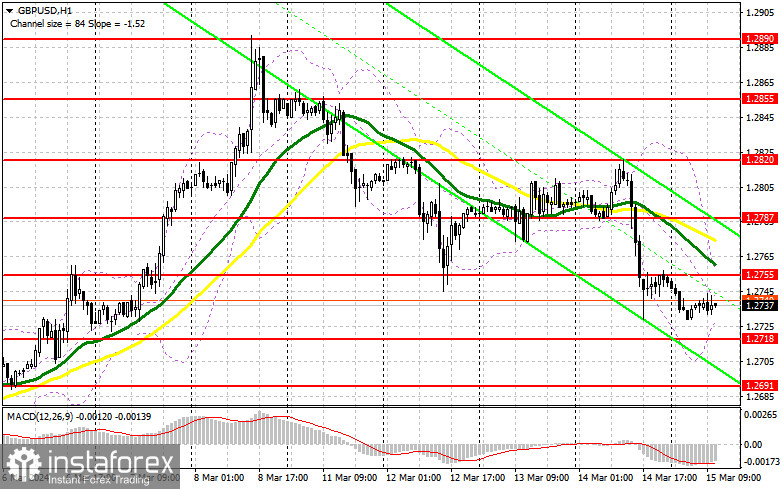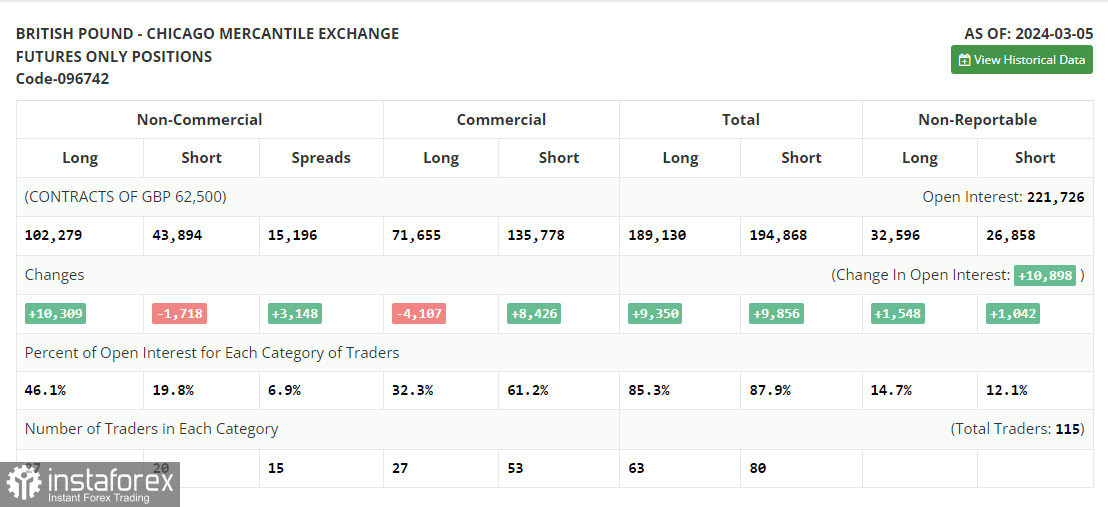In my morning forecast, I paid attention to the 1.2755 level and planned to make decisions on entering the market from it. Let's look at the 5-minute chart and figure out what happened there. The growth occurred, but due to the low volatility of the market, it never reached the formation of a false breakdown there. Against this background, it was not possible to obtain suitable signals for entering the market. In the afternoon, the technical picture was not revised.

To open long positions on GBP/USD, it is required:
Given the lack of statistics on the UK, the pound remained within the side channel with a high probability of further decline. But this requires good statistics on the United States. Figures on changes in industrial production are expected ahead, but special attention should be paid to the consumer sentiment index and the inflation expectations index from the University of Michigan. An increase in these indicators will be direct evidence of concerns about a new inflationary spiral in the US, leading to further strengthening of US dollar positions and a decline in the pound. In the event of a pair's decline, only the formation of a false breakout around the nearest support at 1.2718 will provide a suitable entry point for long positions, counting on the pound's demand returning with the prospect of updating 1.2755 – a new resistance level that we have not yet reached for testing. A breakout and consolidation above this range will strengthen the bull positions and open the way to 1.2787, where the moving averages, favoring bears, are located. The ultimate target will be the maximum at 1.2820, where I plan to make a profit. In the scenario of a GBP/USD decline and the absence of bullish activity at 1.2718, all of which will be possible in the event of strong US data, the pair will continue its decline. In this case, only a false breakout around the next support at 1.2691 will confirm the correct entry point into the market. I plan to buy GBP/USD immediately on a rebound from the minimum of 1.2666, targeting a correction of 30-35 points within the day.
For opening short positions on GBP/USD, the following is required:
Considering that the volatility is very low, bears have every chance of further downward movement of the pair. A false breakout around the resistance level of 1.2755 in the case of a reaction to US data will confirm the correct entry point for selling, continuing the trend, and leading to a downward movement towards 1.2718. A breakout and retest of this range from below upwards will deliver another blow to the bull positions, triggering stop-loss orders and opening the way to 1.2691, where major buyers are expected to appear. The ultimate target will be the area around 1.2666, where profit will be taken. In the event of GBP/USD rising and no activity at 1.2755 in the second half of the day, buyers will feel the strength for a small upward correction. In this case, I will postpone sales until a false breakout at the level of 1.2787, where the moving averages are located. If there is no downward movement there, I will sell GBP/USD immediately on a rebound from 1.2820, but only counting on a pair correction down by 30-35 points within the day.


Indicator signals:
Moving averages
Trading is conducted below the 30 and 50-day moving averages, indicating further pair declines.
Note: The period and prices of moving averages are considered by the author on the H1 hourly chart and differ from the general definition of classical daily moving averages on the D1 daily chart.
Bollinger Bands
In the event of a decrease, the lower boundary of the indicator around 1.2725 will act as support.
Description of indicators:
• Moving average (determines the current trend by smoothing volatility and noise). Period 50. Marked on the chart in yellow.
• Moving average (determines the current trend by smoothing volatility and noise). Period 30. Marked on the chart in green.
• MACD indicator (Moving Average Convergence/Divergence). Fast EMA period 12. Slow EMA period 26. SMA period 9.
• Bollinger Bands. Period 20.
• Non-commercial traders - speculators, such as individual traders, hedge funds, and large institutions, use the futures market for speculative purposes and meet certain requirements.
• Long non-commercial positions represent the total long open positions of non-commercial traders.
• Short non-commercial positions represent the total short open position of non-commercial traders.
• The total non-commercial net position is the difference between the short and long positions of non-commercial traders.





















